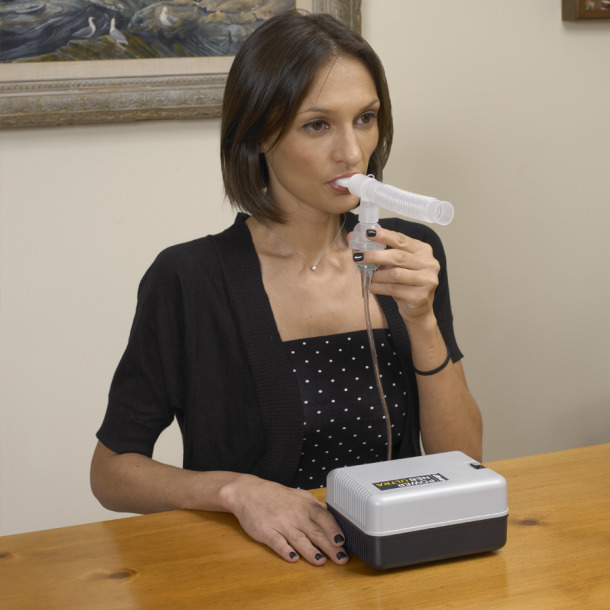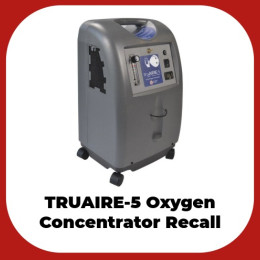
Learn the facts from Teofilo Lee‑Chiong MD
Chief Medical Liaison, Philips Home Healthcare Solutions*
Disclaimer: Information contained in this website is for informational purposes only and should not replace advice from a physician.
How dangerous is asthma?
Myth:
My asthma is not real. It is all in my head.
Fact:
Asthma is not an emotional disease. Rather, it is a very real disorder associated with inflammation or swelling in the airways of the lungs. Emotions and stress can act as asthma triggers causing already existing asthma to flare up or become worse1, 2.
Myth:
My child has asthma and should not play sports.
Fact:
In addition to being enjoyable, playing sports is an important part of a healthy lifestyle. Many athletes have been able to control their asthma and this has enabled them to achieve success in their sports1, 2, 3.
Myth:
My child will never lead a normal life because of his/her asthma.
Fact:
Even though there is no cure for asthma, it can be controlled. Any child who has asthma should be able to live an active and normal life1. Children with well-controlled asthma should be able to participate in most activities without limitations. Being active helps your child stay fit and is important for maintaining a healthy weight.

How is asthma diagnosed?
Myth:
Since I cough only at night, it can’t be asthma
Fact:
Wheezing, breathlessness, and coughing at night are common in asthma1. Do not ignore these symptoms. See your healthcare professional who can perform tests to confirm a diagnosis of asthma.
Myth:
I do not have to take my asthma medications if I don’t wheeze, cough, or have chest tightness.
Fact:
In asthma, inflammation and swelling of the airways can be present even when you have no symptoms. To keep symptoms under control, the underlining airway inflammation needs to be reduced by regularly taking controller medications3. Also, avoiding asthma triggers is an important key to managing asthma.
Myth:
Everyone with asthma has the same signs and symptoms.
Fact:
Signs and symptoms of asthma can differ from person to person1. While some people may wheeze, others may only have coughing. Symptoms may also worsen during asthma flare-ups. Knowing how asthma affects each person will allow you to better manage the disorder and quickly treat any flare-ups.
Are asthma medications dangerous?
Myth:
Steroids that are used for treating my asthma are dangerous.
Fact:
The National Institutes of Health (NIH) treatment guidelines recommends using inhaled corticosteroids (ICS) or steroids to control airway inflammation and swelling in persons with persistent asthma. These steroids are NOT the anabolic steroids that are used to build muscles1, 5, 6. Steroids are inhaled directly into the airways and very little of the medication is absorbed into the rest of the body11. A spacer can be used with a metered-dose inhaler (MDI) or puffer in order to minimize any medications from being deposited in your mouth5. Steroids are effective and safe when used at recommended doses that control your asthma.
Myth:
I will become addicted to my asthma medications if I take them daily.
Fact:
Regular use of asthma medications does not lead to addiction. Because asthma is a long-term condition, it is important to follow the treatment plans prescribed by your healthcare professional to manage your asthma3.
Myth:
I can stop taking my asthma medicine when I don't have any asthma symptoms.
Fact:
Always talk to your healthcare professional before you stop taking any medication as this might lead to worsening of your symptoms or an asthma flare-up3, 6.
Myth:
Inhaled steroids used to treat asthma will stunt my child’s growth.
Fact:
If used properly, inhaled steroids do not affect your child’s growth1. It is important to know that poorly controlled asthma can slow a child’s growth1, 5. It is important to work with your child’s healthcare professional and to have an asthma action plan that best treats your child’s asthma.
Myth:
If my child takes asthma medicine daily for a long time, it will not work as well when he/she has an asthma flare-up.
Fact:
There are two types of medications that are prescribed for asthma. A controller medication is taken daily to control airway swelling3. A reliever medication is taken for symptoms that occur during an asthma flare-up3. Make sure you know which medications your child should take daily and which medications to take for symptoms.
Myth:
Asthma medications are dangerous for pregnant women.
Fact:
It is essential to keep asthma under control during pregnancy4, 5. See your healthcare professional to review the medications that are safe to use if you are pregnant. Asthma that is not well controlled will cause harm to you and your baby.
Understanding peak flow monitoring
Myth:
A peak flow meter is difficult to use and the readings are not accurate.
Fact:
A peak flow meter measures how well air moves out of the lungs, and should be used in moderate to severe asthma to monitor changes in the airways. An asthma flare-up will cause low peak flow readings. By detecting low readings early, you may be able to adjust your medications and avoid an asthma emergency7. Ask your healthcare professional if using a peak flow meter is right for you.
Myth:
I can set my own “personal best” peak flow reading
Fact:
Your healthcare professional will recommend a “personal best” peak flow reading as part of your asthma action plan7.
Myth:
I don’t need to take a peak flow reading every day
Fact:
Try to take your peak flow twice a day, every day, if your asthma is poorly controlled8. This will guide you to know whether your asthma therapy is effective and that your asthma is improving8. Try to stick to a good routine. Keeping your peak flow meter by your toothbrush might help you to remember to use it whenever you brush your teeth as soon as you wake up in the morning and at night before you go to bed.
Understanding spacers & chambers
Myth:
When I use my asthma inhaler, I like to taste and feel the medication in my mouth and throat so I know that I am getting my medication.
Fact:
For your asthma medication to be effective, it needs to be delivered to your airways and not stay in your mouth or throat9. Whatever medication you taste or feel is not getting into your lungs. It may also cause side effects, such as sore throat, hoarseness, or an infection. Very little medication should end up in your mouth if you are using your inhaler correctly9. Review your inhaler technique with your healthcare professional.
Myth:
A spacer is the same as a valved holding chamber.
Fact:
It is not. Spacers and valved holding chambers are commonly used to help the medications pass through the mouth and throat and get into the lungs. A spacer is a simple tube that fits on the end of your inhaler. A valved holding chamber has a spacer that holds the medication until you breathe in, anti-static materials that keeps the medications from sticking to the surface of the spacer, and low resistance valves that lets you breathe easily through the chamber9, 10.
DISCLAIMER:
Information contained in this website is for informational purposes only and should not replace advice from a physician.
Information source: https://www.usa.philips.com/c-e/hs/respiratory-care/myths-and-facts.html#myths_and_facts&slide_med1
FOOTNOTES:
[1] health.utah.gov. Asthma/pdfs/factsheets/myths_facts_asthma.pdf
[2] everydayhealth.com. News/common-myths-about-asthma. Accessed October 2017.
[3] chop.edu. News/asthma-myths-and-facts. Accessed October 2017.
[4] breathefree.com. Asthma-treatment-and-control/asthma-in-special-situations. Accessed October 2017.
[5] nhlbi.nih.gov. Health/health-topics/topics/asthma/treatment. Accessed October 2017.
[6] asthma.org.uk. Advice/inhalers-medicines-treatments/common-concerns. Accessed October 2017
[7] lung.org. Lung-health-and-diseases/lung-disease-lookup/asthma/living-with-asthma/managingasthma/measuring-your-peak-flow-rate. Accessed October 2017.
[8] asthma.org.uk. Advice/manage-your-asthma/peak-flow. Accessed October 2017.
[9] asthma.org.uk. Advice/inhalers-medicines-treatments/inhalers-and-spacers/spacers. Accessed October 2017.
[10] lung.org. Lung-health-and-diseases/lung-disease-lookup/asthma/living-with-asthma/managingasthma/valved-holding-chambers. Accessed January 2016.ets you breathe easily through the chamber9, 10.





0 comments